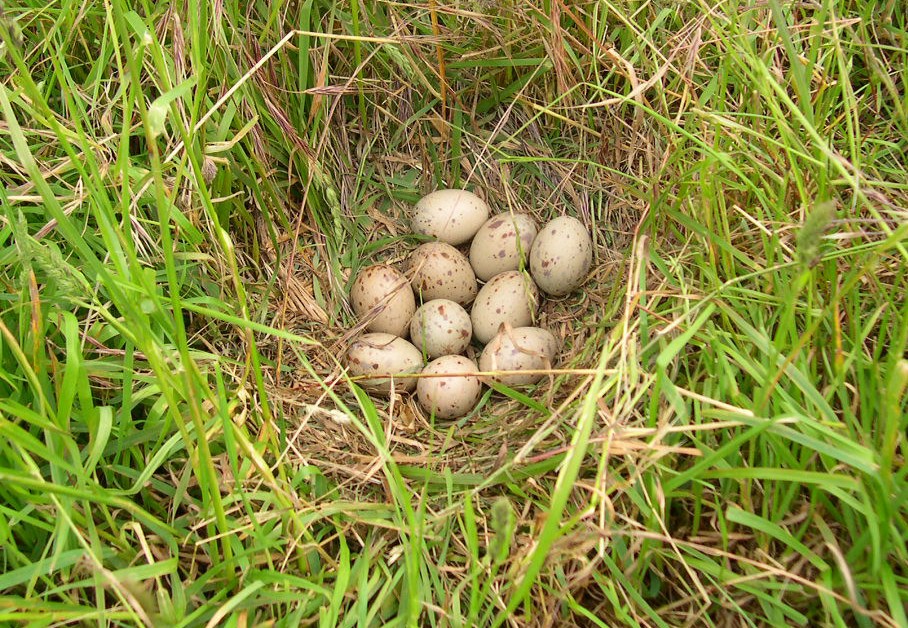Nest Record Scheme

The object of the scheme is to provide abundant and comprehensive data on length, time and peak of breeding seasons, clutch size, number of clutches, incubation and fledgling periods, nest sites and materials used in nest building. Hundreds of cards are needed before a valid analysis can be attempted for any one species and hundreds more to confirm results of the first analysis and show what variations occur between seasons or between districts.
Nest observations have been used in many books and papers, including a study comparing introduced species between New Zealand and Great Britain (Evans et al., 2005 Functional Ecology 19: 616-624). A study of Welcome Swallows found that birds were now breeding earlier than formerly – this being compatible with a response to global climate change (Evans et al., 2003 Emu 103: 215-220). Information from nest record cards was also used in compiling the breeding sections in the Field Guide (Heather & Robertson, 1996).
Over 26,000 cards for 144 species have been submitted since the start of the scheme. More cards are needed, however, to fill in gaps in our knowledge.
How to get involved
All members of Birds New Zealand can take part in the Nest Record Scheme, and non-members may complete cards provided their accuracy is guaranteed by signature of a member. Especially for young enthusiasts, nest recording is a most rewarding activity. Those who find only a few nests can be assured that their contribution, though limited, is welcome and valuable.
How to fill in and submit nest records
- There are only two types of cards – individual nest cards and colonial nest cards (for use at colonies of gulls, terns etc). Individual nest cards are easy to fill in, but directions printed on the card should be carefully read and followed. The cards can be downloaded as PDF Instructions on how to fill in cards are available here
- Remember that cards are wanted for all species, native or introduced, rare or common. Do not confine your recording to nests which appear unusual or specially interesting. Record all nests in which it has been possible to count the contents accurately at least once. With hole-nesting birds accurate counts may be impossible, but record (if known) the date of laying, hatching or young leaving the nest. Cards are not required if a nest seen only once has not been laid in, or is apparently deserted. Begin your search for nests in early spring and continue through the whole nesting season. Too many records from the early, easy part of the season and too few from the later, more difficult period could falsify the final analysis. Remember that some species of seabirds nest in autumn or winter.
- If nest records are written up for publication, cards should still be sent in to the Nest Record Convenor. The value of a record is, of course, increased if a series of visits can be made to the nest, covering the whole breeding cycle. Much information can be gained from a limited number of planned visits, e.g. (for passerine species) two afternoon visits in the egg-laying period, to get date of first egg and egg laying sequence; two during incubation, to determine clutch size; two at hatching time, one when the young are 7-8 days old; one just before fledging and occasional visits thereafter to see if the young are still in the nest.
- If so many visits are not possible, try to visit at least once before the clutch is complete, once after completion of the clutch and once when the young have hatched. If eggs and young are together in the nest, state whether young are hatching or eggs obviously addled. An estimate of age of nestlings or state of plumage development is worth recording. If you have accurate scales and callipers, weigh the chicks and measure the wing length.
- If you find a nest containing a cuckoo egg or nestling, fill in the “species” space on the card thus – Cuckoo (Grey Warbler); do not complete a separate card for the host. Enter the number of eggs or young of the host plus the cuckoo egg or nestlings thus – 4 plus 1 equals four eggs of the host and one of the cuckoo.
- Do not disturb nesting birds unnecessarily. Make your visits as brief as possible, so that eggs or chicks are not left untended or exposed to hot sunlight for long periods. Avoid breaking or damaging vegetation close to the nest; try to conceal your tracks through long grass, etc. Use a mirror fixed to a stick to inspect high nests.
- Make absolutely sure that your identification is correct. Be careful not to record guesses or opinions as fact. Do not write “deserted”, “robbed”, “chicks flown” etc., without briefly stating the evidence for your opinion. Check your cards and send in before 1 March each year.
References
- Evans et al. 2003. Changes in the breeding biology of the Welcome Swallow in New Zealand since colonisation. Emu 103: 215-220.
- Evans et al. 2005. Investigating geographic variation in clutch size using a natural experiment. Functional Ecology 19: 616-624.
- Heather B. D. & Robertson, H. A. 1996, revised 2015. The Field Guide to the Birds of New Zealand. Auckland: Viking.
Download a PDF of the individual nest record card here
For detailed instructions on how to fill in nest record cards click here
For more information please contact the Nest Records Scheme Convenor